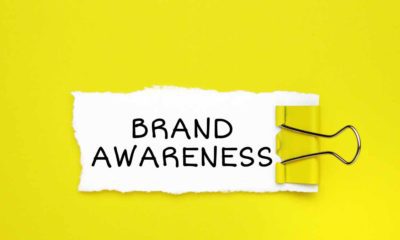Featured
10 Top Advertising Techniques Every Marketer Should Know
In today’s saturated media landscape, standing out from the crowd is more challenging than ever. Advertisers are constantly vying for the attention of consumers, who are inundated with messages from every direction. To break through the noise, it’s essential for marketers to craft campaigns that are not only visually striking but also deeply resonant with their target market. This requires a keen understanding of both the art and science of advertising, blending creativity with strategic insights.
While trends in advertising come and go, certain foundational techniques have proven their efficacy time and again. These techniques, rooted in psychology, design principles, and human behavior, offer advertisers a roadmap to create compelling and memorable campaigns. In this article, we’ll delve into ten such advertising techniques that, when employed effectively, can elevate your campaigns and captivate your target audience.
What are Advertising Techniques?
Advertising techniques are strategic tools employed by marketers to communicate messages about products or brands to audiences. Drawing from psychology, design, and communication, these methods aim to grab attention, stir emotions, and prompt specific consumer actions. Whether through color, endorsements, or narratives, the choice of technique hinges on the product, audience, and campaign objectives. Amidst evolving advertising trends, the core goal remains: to forge meaningful connections with consumers and inspire action.
Advertising Techniques To Know In 2023
- Color Psychology
- Composition
- Rule of Thirds and The Golden Mean
- Focal Point
- Visual Path
- Typographic Composition
- Social Proof
- Storytelling
- FOMO
- Repetition
Color Psychology
Colors are more than just visual stimulants; they carry emotional weight. Different hues can evoke a spectrum of emotions, from calmness to excitement. For instance, while red might signify urgency, passion, or danger, blue often conveys trust, serenity, and professionalism. Brands strategically choose colors that align with their identity and the emotions they wish to evoke. By harnessing the power of color psychology, advertisers can create a deeper emotional connection with their audience and influence their perceptions and actions.
Composition
The arrangement of elements within an advertisement, known as composition, plays a pivotal role in determining its impact. A well-composed ad not only looks aesthetically pleasing but also effectively conveys its message. By strategically placing key elements, using negative space, and ensuring visual balance, advertisers can guide the viewer’s gaze and make the ad’s message both clear and compelling.
[Read More] 10 Top Marketing Metrics To Track In Your Business Right Now
Rule of Thirds and The Golden Mean
These age-old principles of design and art have found their place in modern advertising. By dividing an image or layout into nine equal segments, the Rule of Thirds suggests placing crucial elements at the intersections of these lines, ensuring they capture attention. The Golden Mean, on the other hand, is a mathematical ratio that brings a natural balance and harmony to compositions. By employing these principles, advertisers can craft visually appealing ads that naturally draw in the viewer.
Focal Point
In the vast sea of information, having a clear focal point in an advertisement ensures that the viewer’s attention is immediately drawn to the most important message. This could be a product image, a compelling headline, or a striking visual. By emphasizing this focal point through size, color, or contrast, advertisers can make sure their primary message doesn’t get lost.
Visual Path
As viewers, our eyes naturally follow a path when looking at an advertisement. Advertisers can design this visual journey by strategically placing elements in a sequence that tells a story or emphasizes key points. By understanding and designing this visual flow, advertisers can ensure that viewers absorb the most critical information in the intended order.
Typographic Composition
Words aren’t just carriers of messages; they’re visual elements too. The choice of font, size, weight, and arrangement can dramatically affect an ad’s impact. Effective typographic composition ensures clarity, establishes hierarchy, and can even evoke specific emotions. By mastering typography, advertisers can enhance readability and ensure their message is both seen and felt.
Social Proof
In an era where consumers are bombarded with choices, social proof acts as a guiding light. By showcasing testimonials, reviews, endorsements, or even user-generated content, advertisers can build trust and credibility. When potential customers see that others vouch for a product or service, they’re more likely to make a positive purchasing decision.
Storytelling
Beyond facts and features, stories have the power to resonate on a deeply emotional level. A compelling narrative can humanize a brand, making it more relatable and memorable. Whether it’s the journey of a satisfied customer or the origin story of a product, a well-crafted tale can create a lasting bond between a brand and its audience.
[Read More] Lead Generation: Your Complete Beginner’s Guide
FOMO
The “Fear Of Missing Out” is a potent psychological trigger. By creating a sense of scarcity or a limited-time offer, advertisers can drive immediate action. Whether it’s a flash sale, an exclusive product launch, or a special event, leveraging FOMO can lead to a surge in consumer engagement and conversions.
Repetition
While novelty grabs attention, repetition imprints a message on the mind. By consistently reinforcing a slogan, visual motif, or message, advertisers can enhance brand recall and recognition. Over time, this repetition can lead to stronger brand identity and increased customer loyalty.
[Read More] How to Start a Digital Marketing Company from Scratch
Bottom Line
In the ever-evolving world of advertising, staying ahead of the curve requires a blend of creativity, strategy, and a deep understanding of human behavior. By mastering these ten foundational techniques, advertisers can craft campaigns that not only stand out but also create meaningful connections with their audience. Whether you’re a seasoned pro or a budding marketer, these techniques are invaluable tools in your advertising arsenal.
Frequently Asked Questions (FAQs)
1. How do advertising techniques affect consumers?
Advertising techniques are designed to capture attention, evoke emotions, and influence consumer behavior. By leveraging psychological triggers and design principles, these techniques can shape perceptions, reinforce beliefs, and drive consumers to take specific actions, such as making a purchase or engaging with a brand.
2. What is not an advertising technique?
An advertising technique is a method used to promote or sell a product or service. Anything that doesn’t aim to communicate a message about a product, service, or brand to a target audience, or isn’t rooted in principles of psychology, design, or communication, is not considered an advertising technique. For instance, simply placing a product on a shelf without any promotional effort is not an advertising technique.
3. How many rhetorical techniques are usually found in advertisements?
Advertisements often employ a variety of rhetorical techniques to persuade and appeal to consumers. Commonly, an advertisement might use three main rhetorical appeals: ethos (credibility or ethical appeal), pathos (emotional appeal), and logos (logical appeal). However, the number can vary based on the complexity and purpose of the ad. Some ads might focus on just one appeal, while others might blend multiple techniques for a more layered approach.
4. Which health reason is best for learning about advertising techniques?
Understanding advertising techniques is crucial for health reasons, especially when it comes to recognizing and critically analyzing ads related to food, beverages, medications, or health services. By being informed, consumers can make healthier choices and avoid being misled by ads that might exaggerate benefits, omit crucial information, or present products in a misleading light.
5. What advertising technique uses celebrities?
The use of celebrities in advertisements is known as “Celebrity Endorsement.” Brands often leverage the fame, credibility, and appeal of celebrities to promote their products or services. The idea is that the positive attributes associated with the celebrity will be transferred to the product, making it more appealing to consumers. This technique plays on the trust and admiration fans have for the celebrity, encouraging them to try or buy the endorsed product.
Brett Heimann is a marketing & advertising professional with 10 years of experience. He's the founder of MarketingAgency.com and contributes to other publications such as; Entrepreneur, Thrive Global, and StockMarket.com. His passion for digital marketing began after graduating with a B.S.B.A in business administration and finance in 2013. After completing college, he went on to become an entrepreneur in the marketing and finance space. Brett loves the ability to deliver to his readers engaging and educational content that can be easily consumed by the reader. He enjoys writing about a wide variety of marketing topics such as; Search Engine Optimization (SEO), Paid Advertising (PPC), E-Commerce, and Lead Generation For SMBs to name a few. Brett, a South Florida native, enjoys spending time with his wife and two sons outdoors and is a big basketball and MMA fan.











